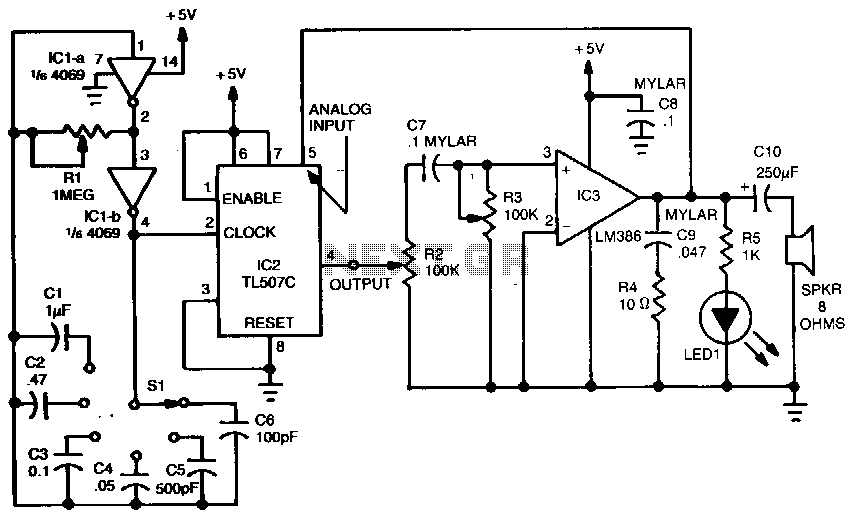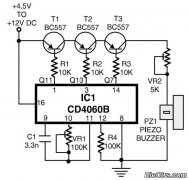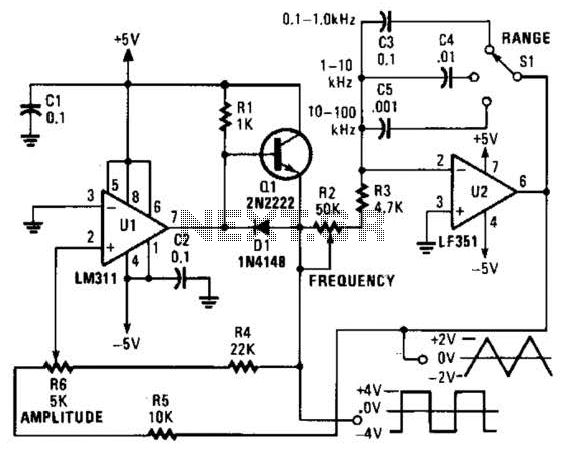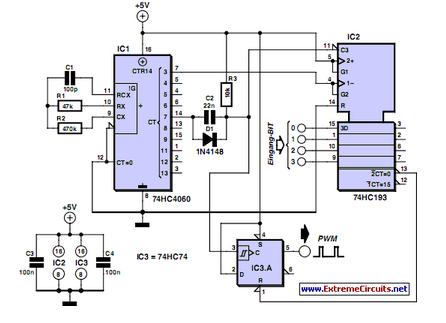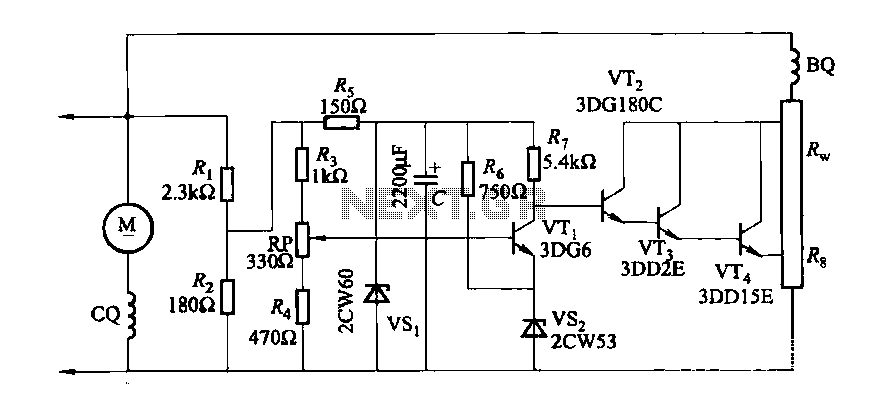
Staircase generator

Two CA3130 operational amplifiers are utilized, with one functioning as a multivibrator and the other serving as a hysteresis switch. Additionally, a CA3160 amplifier is employed as a linear staircase generator. The circuit incorporates three BiMOS operational amplifiers.
The circuit design consists of two CA3130 op-amps configured to perform distinct yet complementary functions. The first CA3130 is configured as a multivibrator, which generates a square wave output. This multivibrator can be set up in either astable or monostable mode, depending on the desired frequency and duty cycle of the output signal. The timing components, typically resistors and capacitors, are selected to establish the frequency of oscillation.
The second CA3130 operates as a hysteresis switch, which introduces a feedback mechanism to the multivibrator. This configuration enhances the stability of the output signal by preventing noise from causing false triggering. The hysteresis effect is achieved by feeding back a portion of the output voltage to the non-inverting input of the op-amp, creating two distinct threshold voltages. This results in a clean transition between high and low states, improving the performance of the overall circuit.
The third component, the CA3160, is employed as a linear staircase generator. This op-amp is capable of producing a stepped output voltage that increases or decreases linearly over time. The staircase generator can be controlled by the output of the multivibrator, allowing for synchronization between the two circuits. The design of the staircase generator typically involves a combination of resistors and capacitors to set the step size and timing of the output changes.
Overall, the integration of these three BiMOS operational amplifiers allows for the creation of a versatile circuit capable of generating oscillating signals and linear voltage outputs, suitable for various applications in signal processing and control systems. The careful selection of components and configuration ensures reliable operation and performance tailored to specific requirements. Two CA3130's are used, one as a multivibrator and the other as a hysteresis switch. The third amplifier, a CA3160, is used as a linear staircase generator. The circuit uses three BiMOS op amps. 🔗 External reference
The circuit design consists of two CA3130 op-amps configured to perform distinct yet complementary functions. The first CA3130 is configured as a multivibrator, which generates a square wave output. This multivibrator can be set up in either astable or monostable mode, depending on the desired frequency and duty cycle of the output signal. The timing components, typically resistors and capacitors, are selected to establish the frequency of oscillation.
The second CA3130 operates as a hysteresis switch, which introduces a feedback mechanism to the multivibrator. This configuration enhances the stability of the output signal by preventing noise from causing false triggering. The hysteresis effect is achieved by feeding back a portion of the output voltage to the non-inverting input of the op-amp, creating two distinct threshold voltages. This results in a clean transition between high and low states, improving the performance of the overall circuit.
The third component, the CA3160, is employed as a linear staircase generator. This op-amp is capable of producing a stepped output voltage that increases or decreases linearly over time. The staircase generator can be controlled by the output of the multivibrator, allowing for synchronization between the two circuits. The design of the staircase generator typically involves a combination of resistors and capacitors to set the step size and timing of the output changes.
Overall, the integration of these three BiMOS operational amplifiers allows for the creation of a versatile circuit capable of generating oscillating signals and linear voltage outputs, suitable for various applications in signal processing and control systems. The careful selection of components and configuration ensures reliable operation and performance tailored to specific requirements. Two CA3130's are used, one as a multivibrator and the other as a hysteresis switch. The third amplifier, a CA3160, is used as a linear staircase generator. The circuit uses three BiMOS op amps. 🔗 External reference
